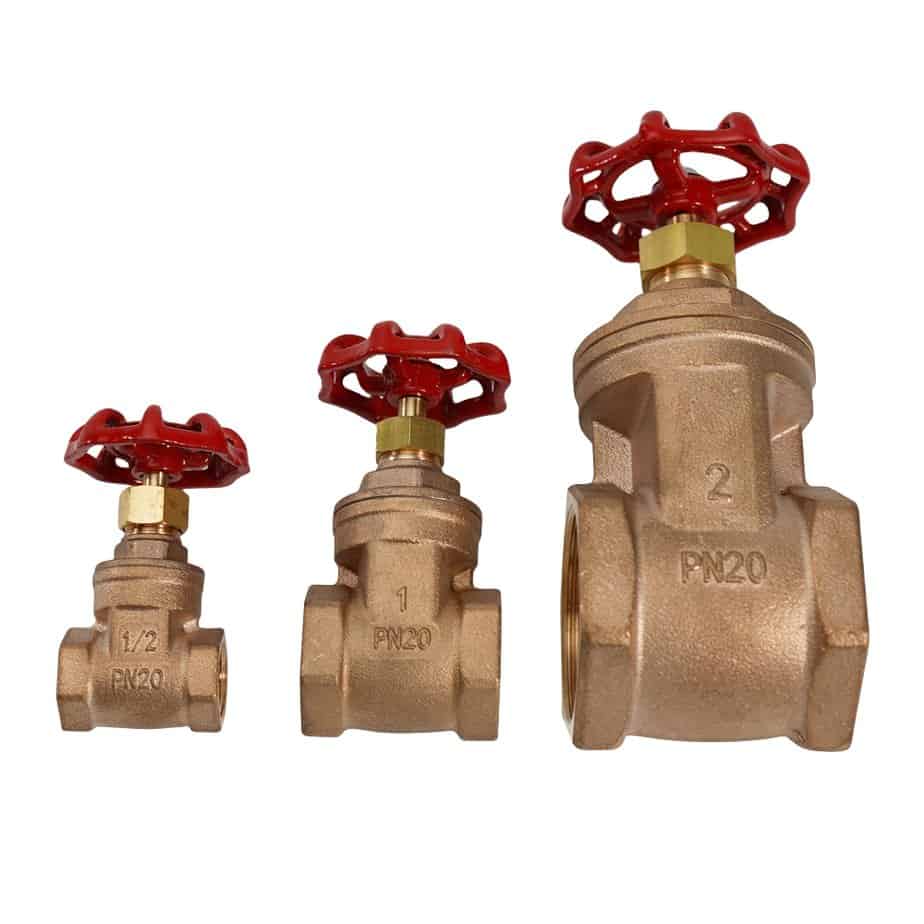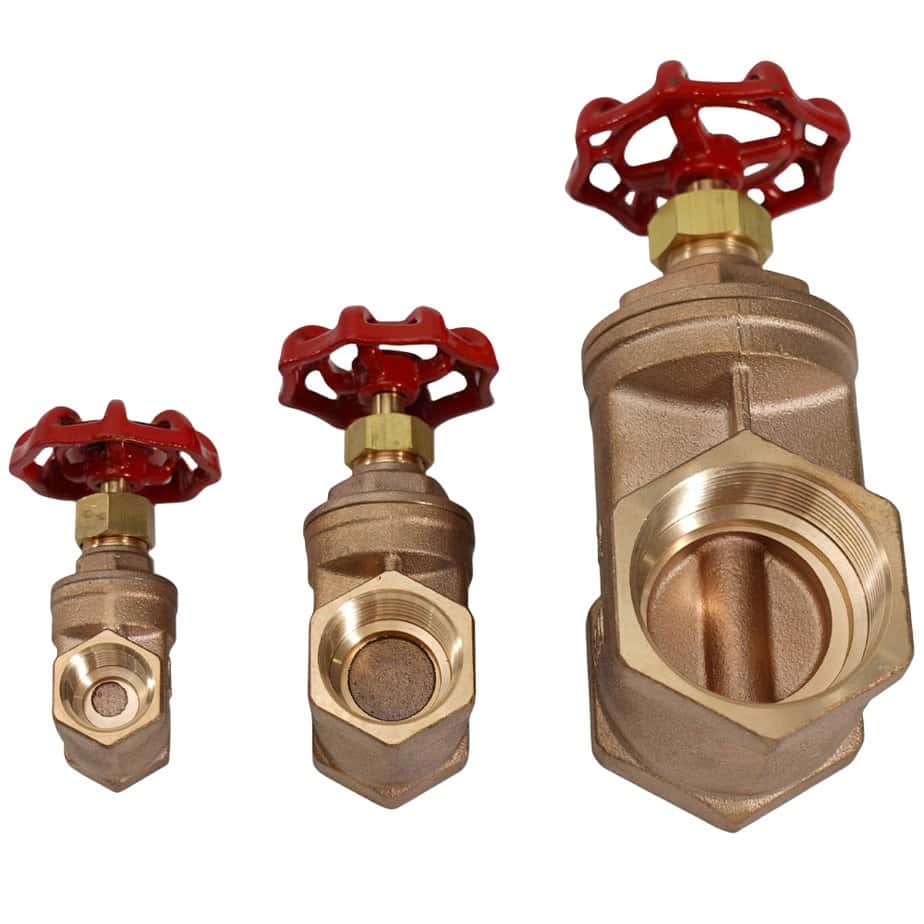Description
Heavy Duty Bronze Gate Valves
JX-0868
- Bronze Gate Valve
- Female x Female NPT, IPS
- Non-rising stem
- Cast Iron Handle
- Suitable for a full range of liquids and gas
- Flow can go in both directions
- Each valve was individually tested
- Threaded ends to ANSI
- Dimensions: through 1/2 to 6 inch
As the name suggests, Bronze gate valves predominantly use bronze, an alloy primarily made of copper, for their construction. The choice of bronze is not only for its aesthetic appeal but also for its properties like corrosion resistance, strength, and durability. But how does this valve function?
Structure and Key Components
Before understanding how a bronze gate valve operates, it’s crucial to familiarize ourselves with its primary components:
- Body: This is the main part of the valve, crafted from bronze. It houses the internal components and provides the pathways for fluid flow.
- Gate: A flat or wedge-shaped component that can be lifted or lowered. Its primary function is to start, stop, or regulate the flow of a fluid.
- Stem: This connects the gate to the handwheel or actuator. When the handwheel is turned, the stem moves, lifting or lowering the gate.
- Handwheel: The manual operator of the valve. By turning the handwheel, users can open or close the gate.
- Bonnet: Positioned at the top of the valve body, it provides an enclosure for the stem. It usually has a seal to prevent any external leakage.
- Seat: The internal surface of the valve body where the gate rests in a closed position. It ensures a tight seal when the valve is closed.
The Operational Mechanics
The operation of a bronze gate valve is quite straightforward:
- Opening the Valve: As you rotate the handwheel in a counter-clockwise direction, the stem rises, lifting the gate. As the gate ascends, the flow path clears, allowing fluid to pass through the valve.
- Closing the Valve: Turning the handwheel clockwise causes the stem to descend, pushing the gate down. As the gate meets the seat, it creates a seal, stopping fluid flow completely.
- Regulating Flow: While gate valves are primarily designed for full opening or complete closing, they can be partially opened to regulate the flow. However, this is not the recommended practice for prolonged durations since it may lead to erosion of the valve.
A Watergate valve is usually used in water systems to regulate fluid flow through pipes.
| Parameter | Brass/Bronze Gate Valve |
|---|---|
| Sizes | 1/2″, 3/4″, 1″, 1 1/4″, 1 1/2″, 2″,3″,4″,5″,6″ |
| Min. Working Pressure | 0 psi (0 bar) |
| Max. Working Pressure | 20 bar |
| Min. Working Temp. | -20°C |
| Max. Working Temp. | 180°C |
| Material | Brass or Bronze (body & disc) |
| Connection Type | Threaded (NPT, BSP) |
| Seal Material | PTFE |
| Handle Material | Iron or Aluminum |
| Operation | Handwheel |
Heavy Duty Bronze Gate Valves Vs. Stainless Steel Gate Valves:
Navigating the world of gate valves is a challenge, especially when deciding between materials like heavy-duty bronze and stainless steel. Each material has its unique properties, making them suitable for specific situations. Let’s unpack their advantages, disadvantages, and ideal use cases to assist you in making an informed decision.
Introduction: The Importance of Material Choice
When considering gate valves, the material selection influences cost and determines the valve’s longevity, efficiency, and range of applications. It’s essential to recognize that there’s no one-size-fits-all solution; the best choice varies based on specific use cases.
Bronze Gate Valves: Diving Deeper
Bronze, an alloy primarily composed of copper, has been used in constructing various tools, structures, and machines for centuries. Its popularity in gate valves isn’t by coincidence but the result of its many compelling properties.
Advantages:
Superior Corrosion Resistance: In environments with moisture or specific chemicals, bronze gate valves have a natural resistance. This characteristic makes them perfect for marine applications or places with high humidity.
Proven Durability: Bronze isn’t just tough; it’s historically reliable. This material has stood the test of time in various applications, ensuring that when you invest in a bronze gate valve, you invest in longevity.
Disadvantages:
Heft and Weight: The robustness of bronze comes at a weight cost. This heaviness might pose challenges during installation or in applications where weight is a concern.
Temperature Sensitivity: While versatile, bronze isn’t always the best for extreme temperatures. It has limits, which can be a constraint in specific industrial applications.
Stainless Steel Gate Valves: Unveiling the Details
Stainless steel, an iron-based alloy with at least 10.5% chromium, is a modern marvel in the construction world. Its properties make it an attractive choice for various applications, including gate valves.
Advantages:
Incredible Strength: Stainless steel valves, known for their enduring ability, can resist high pressures. This strength means fewer replacements and less downtime.
Versatility in Temperatures: Stain steel remains reliable, Whether in the freezing cold or searing heat. Its vast temperature tolerance makes it ideal for varied industries.
Modern Aesthetics: Beyond functionality, stainless steel has a contemporary, clean finish that many users appreciate, especially in visible installations.
Disadvantages:
Price Point: Quality comes at a cost. The initial investment for stainless steel 314 and 316 can be higher than bronze, which might be a determining factor for budget-sensitive projects.
Selective Corrosion: While generally rust-resistant, stainless steel isn’t invincible. In environments with high chloride exposure, there’s potential for corrosion.
Decision Time: Bronze or Stainless Steel?
Your decision should lean on the specifics of your project:
- If you’re working in a marine environment or a place with high humidity and need a cost-effective solution, bronze could be your ally.
- However, stainless steel stands out if your project demands resilience across a wide temperature range and you’re prepared for a heftier initial investment.
In conclusion, heavy-duty bronze and stainless steel have their rightful place in gate valves. By understanding the strengths and weaknesses of each material, you can make an educated choice that aligns with your project’s demands.



